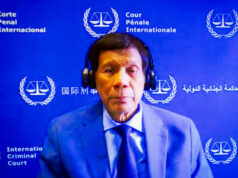Nomura sees ‘marginal improvement’ in Q2 GDP growth
OVERALL ECONOMIC GROWTH likely picked up slightly this quarter from January-March but was still a slowdown from a year ago due to improved but still-muted government spending, Euben Paracuelles, executive director and senior economist for Southeast Asia at Nomura Securities Company Ltd’s Research Division, said in a June 28 note e-mailed to journalists on Friday.
Mr. Paracuelles said he expected second-quarter gross domestic product (GDP) growth — which the Philippine Statistics Authority will report on Aug. 8 hours ahead of the central bank’s fifth policy review for the year — to clock in at 5.8%.
Actual GDP growth clocked in at 6.2% in April-June last year.
“The government’s monthly fiscal surpluses in April and May support our Q2 GDP growth forecast of 5.8%, which is only a marginal improvement from the growth of 5.6% in Q1,” he wrote in Nomura Asia Insights: Double-barreled policy easing in H2.
Latest Treasury data show year-to-date fiscal deficit down by 99.4% to P809 million as of May from P138.7 billion in 2018’s first five months, as revenues grew 10.7% to P1.314 trillion from P1.186 trillion, while the government spent 0.8% less at P1.315 trillion from P1.325 trillion due to the four-month delay in the 2019 national budget, which President Rodrigo R. Duterte slashed by P95.3 billion to P3.662 trillion when he signed it into law in mid-April to take out irregular allocations.
“This implies GDP growth in H1 is tracking well below the government’s full year 6-7% target, which has already been scaled down from 7-8% earlier,” Mr. Paracuelles said.
“Our Q2 forecast takes into account government spending and total investment growth that are still moderating, but by less than in Q1,” he explained, adding that “[t]here are also additional headwinds from escalating US-China trade tensions, which are hurting exports across the region.”
JUNE INFLATION EXPECTED AT 2.9%
He also said that he expects headline inflation to fall “below the mid-point of BSP’s 2-4% target at around 2.9% y-o-y in June from 3.2% in May” and the year-ago 5.2%.
The outlook compares to the central bank’s 2.7% forecast average and 2-4% target range for full-year 2019.
“This not only reflects a lower crude oil price average so far this month but also likely slightly lower core inflation, which is consistent with moderating GDP growth in Q1,” Mr. Paracuelles explained.
He added that he expects the overall rise in prices of widely used goods to slow further to 2.1% next quarter on the back of falling rice retail prices, after the government liberalized importation, as well as base effects from price increases in the wake of tax hikes in January last year.
OUTLOOK
For the rest of the year, Mr. Paracuelles said, state macro policy “will become much more expansionary.”
“Fiscal spending, in our view, has been relatively slow to recover after the budget was delayed and approved only by mid-April. This will likely prompt the authorities to intensify implementation of ‘catch-up’ spending plans, although these will only likely be more successful well into H2,” he wrote.
Mr. Paracuelles also noted that local governments, whose new elective officials assume office only on Tuesday after winning the May 13 mid-term elections, are in the midst of a leadership transition. “Partly because of this transition, capital outlays tend to be slower in the two months after elections before picking up again,” he said.
“The initially slow rebound in fiscal disbursements should also provide a justification for BSP to resume policy rate cuts shortly, focusing on supporting growth further while the inflation outlook remains benign, as we expect headline CPI inflation to fall well below the mid-point of the 2-4% target in coming months.”
After hiking benchmark interest rates by 25 basis points in March, the central bank left those rates unchanged on June 20 as a “prudent pause for the time being” to allow it to assess the impact of the preceding policy rate cut and the 200bp reserve requirement ratio cuts being implemented in tranches from May to July.
The central bank raised policy interest rates by a total of 175 bp last year in the face of multi-year-high inflation rates that peaked at a nine-year-high 6.7% in September and October.



